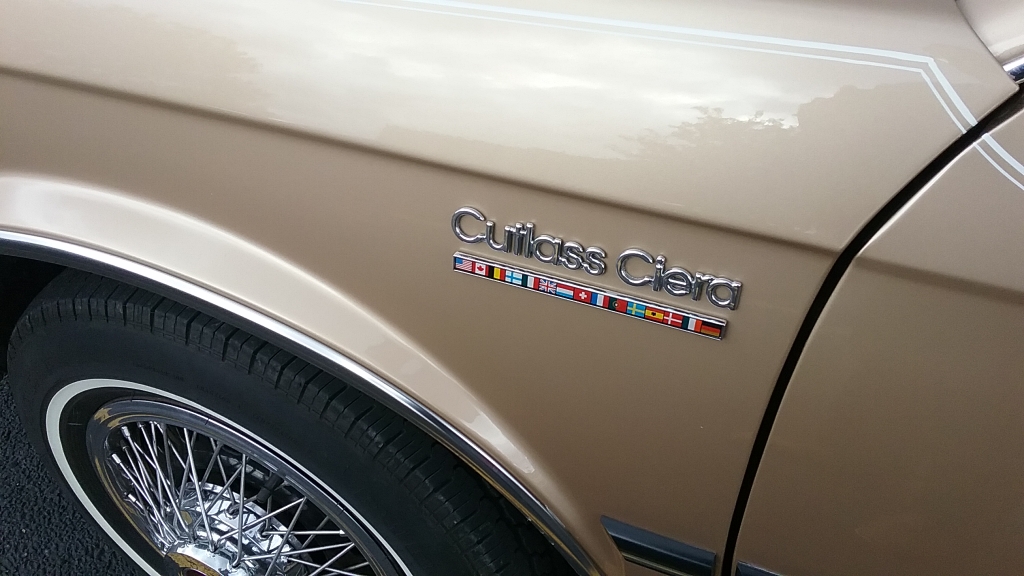
I grew up in Northwestern Illinois. Due to this, I am very familiar with the GM A-bodies, and Cutlass Cieras in particular. They were everywhere at the time. So were their brethren, the Chevy Celebrity, Pontiac 6000 (a friend of my dad’s bought a white 6000 STE brand new) and Buick Century. There were at least two Cutlass Cieras on my block circa 1985. They were as common on the streets as CR-Vs and Tahoes are today. Arguably, the most famous Cutlass Ciera was the tan 1988 Cutlass Ciera that Jerry Lundegaard gave the hit men as partial payment in the classic 1996 film, Fargo. Of course, that Oldsmobile was what ultimately led to everything going pear-shaped in spectacular fashion. An aside, if you haven’t seen this movie, go watch it right now. I’ll wait. OK, ready? Then let’s continue!

In Autumn ’81 the Cutlass Ciera first appeared, as a 1982 model. It had some very big shoes to fill, though the larger rear wheel drive Cutlass Supreme remained in the lineup. The Cutlass nameplate was Oldsmobile’s most successful in the 1970s, and the Cutlass Supreme coupe in particular was the undisputed best selling model in the lineup. The Cutlass was downsized in ’78, followed by a more aerodynamic restyling in 1981. It remained in the line with the addition of the Cutlass Ciera, however. It was the first time the Cutlass nameplate was applied to more than one car line. As the ’80s progressed, Cutlassization would run rampant over at Oldmsobile Division. Likely at its peril, but never mind that today.
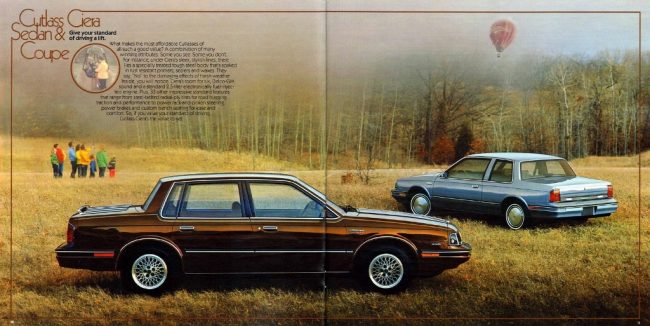
The 1982 Cutlass Ciera was a response to the recently enacted Corporate Average Fuel Economy (CAFE) standards. As a result of this legislation, vehicle lineups had to be more fuel efficient. You could still build full-size cars like the Delta 88 and Ninety Eight Regency, but it had to be balanced by the addition of smaller, lighter and more efficient vehicles to the lineup to offset a given marque’s overall fuel efficiency. As a result, the Ciera had front wheel drive, unit construction and no V8 option.
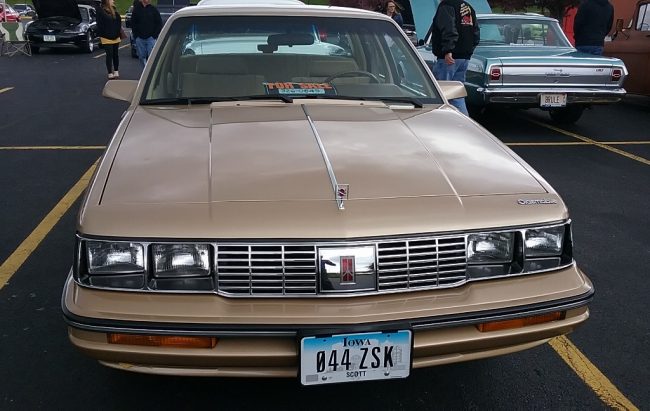
The standard engine was a 2.5L 4 cylinder, with a 2.8L V6, 3.0L V6, and 4.3L diesel V6 engines standard or optional, depending on the model. It was initially offered as a two-door or four-door sedan in base, LS and top-of-the line Brougham models. For 1983 an ES option was added, with blacked out trim, sporty wheel covers, a console and full instrumentation. The ES model was in the line for several years, but was a rare sight. Base model Cutlass Cieras like today’s featured car, in navy, gold, burgundy or white, with wire wheel covers, were far more common.
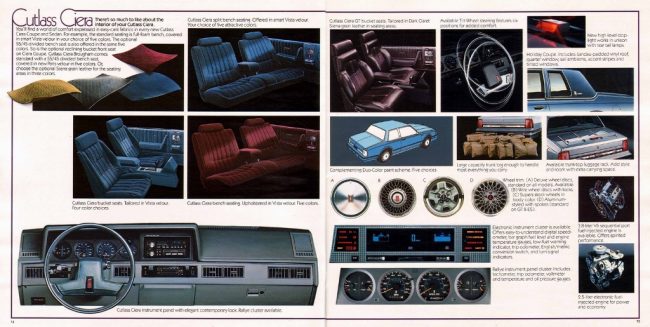
As previously mentioned, the RWD Cutlass Supreme remained in production, so the Cutlass Cruiser station wagon remained on the Supreme platform for 1982 and 1983. In 1984, that wagon went away and was replaced by a Ciera-based version. It was immediately popular with first year production of 41,816, nearly double that of the 1983 rear-drive version.
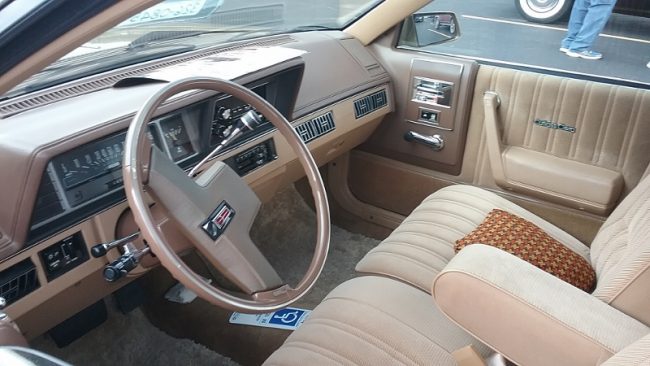
It certainly didn’t hurt that the Cutlass name still had quite a bit of cachet with buyers. As did Oldsmobile itself. In inaugural 1982, 9,717 base Ciera sedans 29,322 LS sedans and 33,876 Brougham sedans were built. By 1985 figures were 123,768 LS sedans and 117,763 Brougham sedans. Our ’86 feature car is one of 151,606 base sedans. MSRP was $10,354. Approximately 377,000 Cutlass Cieras of all types-coupe, sedan and wagon-were sold in 1986.
The Cutlass Ciera was a great success, and wound up being the most popular Oldsmobile of the 1980s. The choice of a Cutlass Ciera as the car the hit men drive in Fargo was perfect. If you wanted to blend into the background in Minnesota in the late ’80s, this was the car to drive. They were everywhere there-and in Illinois, Iowa, Ohio and Missouri too.
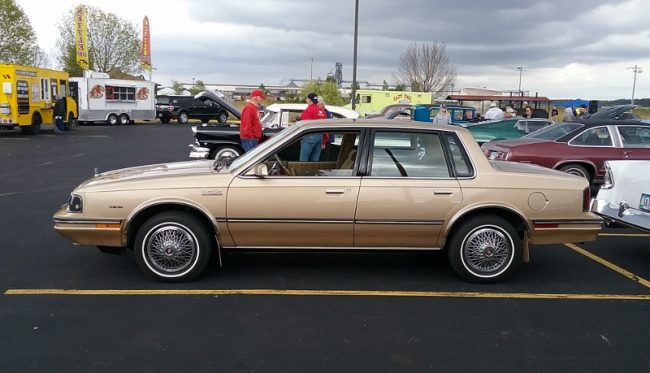
They were so common as to be, for all intents and purposes, invisible. Much like a beige Camry or Silver Fusion is in 2019. One of our neighbors across the street, an older lady, had a cedar metallic Brougham sedan, probably an ’84 if memory serves. Our next door neighbor’s daughter, Jeannie, had a cream colored ’84 Cutlass Cruiser with a brown interior and her husband had a full size Custom Cruiser. The Quad Cities loved their Oldsmobiles, yessireebob!
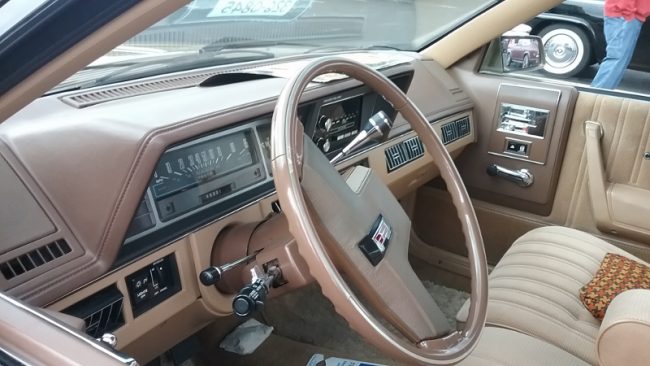
One of our grade school teachers had a burgundy ’85 Ciera sedan that was a little worse for the wear by the time he was driving it in the early ’90s.
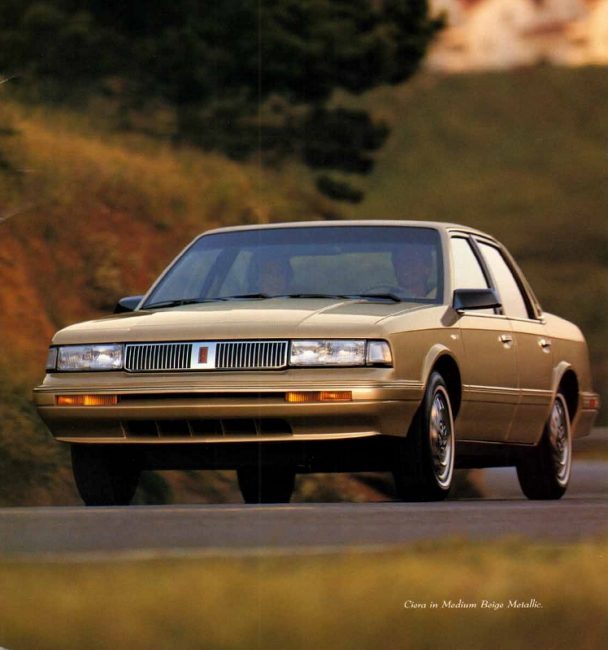
1996 Ciera sedan
Even my driver’s ed car was a navy blue ’96 Ciera with a blue interior. When I started working part-time at an insurance company during high school and college, the underwriting manager had a gunmetal gray ’91 or ’92 sedan. Those are just the ones I remember. Yes, Northwest Illinois really liked their Oldsmobiles, the Ciera in particular.
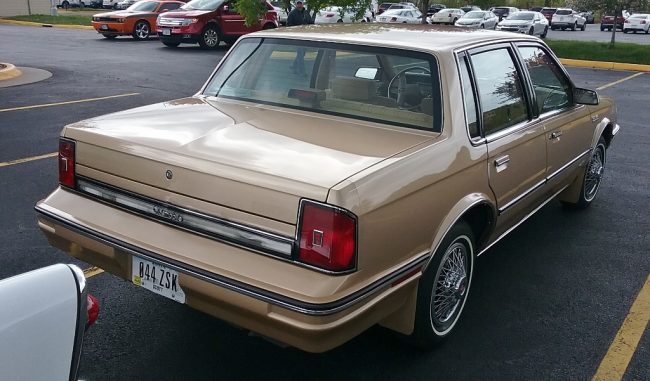
However, with success can come complacency. The Ciera was a very comfortable, efficient, state of the art car – in 1982. The problem was, there were no significant updates to the car, save a redesigned roofline for the coupe in mid-1986 and the sedan in 1989. Some slight changes were made to the grille and taillights, usually every couple of years, and a driver’s side airbag was added.
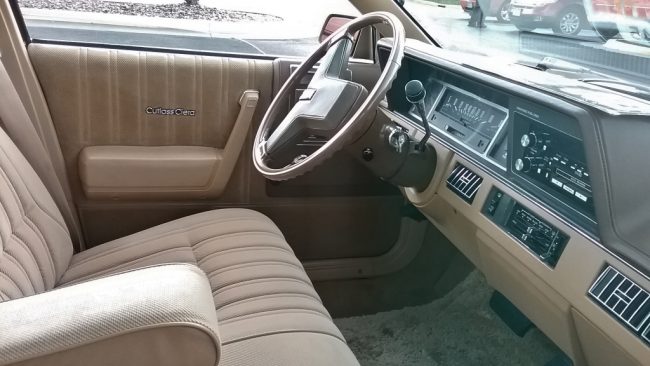
Yet despite the lack of changes they kept selling, though they got progressively plainer. As the years went by, the most desirable options such as full gauges, super stock wheels and leather upholstery went away. On the plus side, the longer they were made, the better they were built. By the early 1990s these cars and their A body cousins were some of the most trouble free cars available.
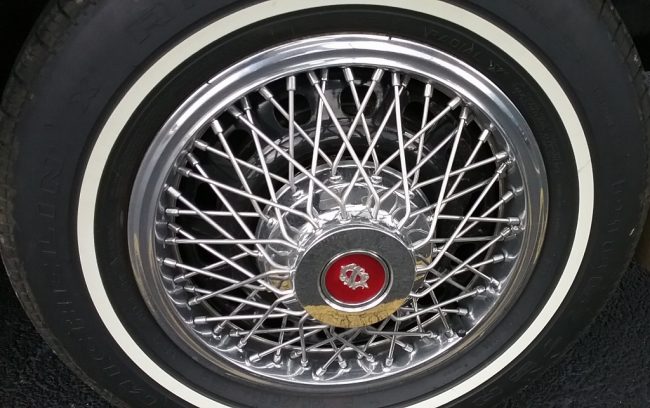
But eventually, it was finally time to retire them, and along with its remaining A body cousin, the Buick Century, they were put out to pasture in 1996. The coupe disappeared after ’91, but the sedan and wagon made it to the end of the line. At the time, I recall reading an article where Oldsmobile made 1982 and 1996 model Cieras available to the press to commemorate all the years of production.
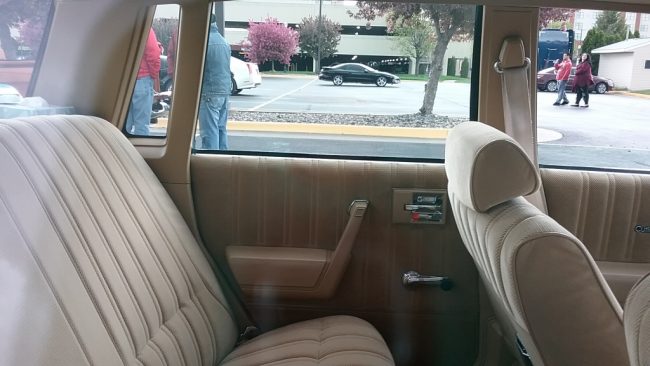
One wag claimed he couldn’t tell which was which. And so ended fifteen years of production. A ‘new’ Cutlass came out in 1997, but it was clearly a badge-engineered version of the 1997 Chevy Malibu. Only the grille and taillights were different, and there really wasn’t a compelling reason to buy one over a Malibu, unless you got the top trim one with the nice wheels, leather, etc. Or you just really liked your local Olds dealer. But it essentially tanked. Oldsmobile never really got a replacement that was a volume seller (at least, until the Alero appeared), and Oldsmobile Division came to the end of the road after a very short run of 2004 models.
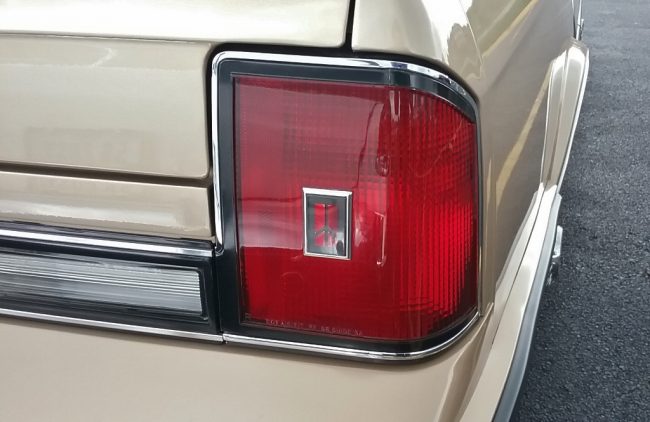
I spotted our featured gold ’86 at the cruise night at Isle of Capri casino back on May 11th. The weather kind of sucked, but I went anyway. This monthly event usually draws at least a 100-150 cars, but intermittent rain, clouds and cold meant there were only about 30 cars on this day. But I was still pleased to see this showroom new survivor. It had the ’86 grille, but no center brake light in the rear window, which was kind of odd (EDIT: It’s there, I’m blind, carry on). But what a clean old car. And a reminder of thirty-odd years ago, when these things were everywhere!
Out of all the marques that have disappeared beneath the waves over the past 15-20 years, I still miss Oldsmobile the most.
And if you haven’t seen Fargo and have no idea what the title of this post is about, look no further:







44 Comments
Think of what a big change this was. FWD, a standard injected economical four. 7 inches shorter, 3 inches narrower 12 percent lighter from a car downsized only 4 years earlier. The way the car comes together in the factory is so different that the workflow has to be reimagined not just retooled. Olds was so nervous the old model stayed around in case buyers got nervous. Yet it sold great, 4 years in the Olds never mind the Chevy outsold the Taurus with it’s import derived styling, not even Ford of Europe but full bore Audi. The answer to the success was in not being embarrassed to design a car for your actual buyers, not the import drive by sneer crowd. This was a skill that eluded by the nineties, the influence of CD/RT sneers and the terrifying new import factories with their non union wages and their suckling on to your carefully arraigned, still domestic supply base had eroded confidence. How to fill the factory with all the new competition and how to make money with a half full factory.
It didn’t help when the magazines were saying that the imports could do no wrong, not seeming to notice the lack of engine choice and the total dependence on the manual transmission that few bought to avoid complete embarrassment. It fit their politics, the new generation had a coalition of the ascendant, no way they were going to drive big three. Somebody had to cheerlead that they were doing the right thing. Shameful and dishonest.
Another John C rant about how people didn’t do what he wanted.
How is choosing a different, and sometimes better, product shameful and dishonest?
I was speaking more of the lazy dishonesty of the magazine commentary. When Japan built in America their first fake A body the 1990 Accord. Did the reviews wonder where the V6 was? No, they only tested 5 speeds, and talked glowingly of how flexible the Accord was. Clever folks the Honda engineers were, there might be a 5 cylinder soon. Will it have any torque, no, will it even get to the American Honda dealer, no but hey you got to go the extra mile for your favorite even if their effort lacked. Political and generational bias that the then 12 year old reader never figured out, even know when they are over 40.
Yep. That’s about the time I ditched the auto magazines. They had all become marketing agencies for Honda and Toyota, as well as the “superior” German machines.
There’s a bit of revisionist history going on in your retelling. These A-bodies were bad, disappointing cars. Tinny and loud compared to their RWD predecessors. They managed to ride badly while still having the floaty, disconnected handling that characterized cars of the Brougham era.
Tom is also omitting the key information that in Northern Illinois (I’m from Chicagoland myself), the salt would eat through a Ciera’s quarter panels and the bottoms of the doors inside of 5 years. Rear axles would also rust to the point of failure. The engine choices were crap: The V-6 engines weren’t particularly durable or fuel efficient compared to the V-8s in the RWD cars. The 2.5L 4-cylinder engines sounded horrible and put out the power of Japanese 1.8L engines.
The Cutlass Ciera and its Chevy/Pontiac platform mates were cars that opened up a big opportunity for the Japanese nameplates to take market share. They do not deserve our nostalgia.
I dunno. A 1988 Ciera with the 3800 V6 was very quick and returned excellent fuel economy. I initially wasn’t a fan of the A-bodies…until we rented a 1988 Buick Century with the 3800 and drove it across Washington State. But to each his own…
Bacon revising some on his own. Given the weight reduction and the out of balance nature of the early Buick V6s in the previous cars the 2.5 was a great replacement with comparable acceleration and a 20% economy improvement. Those same V6s now much developed and smoothed over time were faster than the 260-307 in the previous. Bacon cites rust as if the protection got worse instead of better over time. Wrong. The Honda 1.8 made 75 horsepower in 82 way less than 92 from the tech IV. The A body 4 was up to 120 horsepower by the end of the run despite losing 12 percent of its displacement. This made a big difference when weight was not exploding as with Accord, up over 30 percent in the same period.
You are welcome to be nostalgic for long ago Hondas the way I am for same time domestic offerings. We domestic fans have to constantly listen to uninformed griping about our favorites. The cars you liked had their own issues, so many years later after the tragedy wrought by them on a once important industry, it is past time that those issues be explored and why they were ignored at the time.
I appreciated the extra torque of the GM four, courtesy of its larger displacement. Hondas, then and now, require more RPM to make their power. Me? I want the low RPM torque to get things rolling from a stop, without having to wind the whee out of the engine.
There is a place for high reving small fours that come alive at the top of the rev range. Fiat and Alfa pioneered it and Honda of thirty plus years ago built on that tradition. Where it fell down was trying to tell the average commuter that was the best way to commute to work. I am not saying the iron duke was exciting even after the big power bump and the balance shafts, but it got you to work economically city or highway, lasted 100,000 miles with American style maintenance and with the factory AC blowing. A little cross shopping between Honda automatic buyers and what was possible at the same money over at Olds would have opened some eyes and back into commuter cars named Cutlass.
You c
As I recall, the mid-’80s Hondas, Datsuns/Nissans and Toyotas rusted at a roughly equivalent rate. Those 1988-91 Camrys were common rust buckets here by 1995-97-especially the front fenders for some reason-though the 1992-96 Camrys were much more rust resistant. And that rear fender ‘rust dot/rust blob’ at the trailing edge of the rear wheel well on Hondas blossomed on various Civics and Accords well into the 1990s-I’ve even seen early Pilots with this inadvertent ‘trademark.’
“The engine choices were crap: The V-6 engines weren’t particularly durable or fuel efficient compared to the V-8s in the RWD cars.”
You are very wrong.
“I can no longer sit back and allow Communist infiltration, Communist indoctrination, Communist subversion, and the international Communist conspiracy to sap and impurify all of our precious formal rooflines”
Sure Carmine, stand up to the Communists. Keep the Volgas near the Volga river where they belong. If our formal rooflines however were good enough for Volvo, they should be good enough for us.
Like you, I knew numerous people who had these cars and other FWD A-bodies, too. My in-laws had two of these back in the 1980’s, both of which were good runners for them. These were almost ubiquitous in the middle of the country, there were so many on the roads, it looked like this was the only car that Oldsmobile sold.
I had a co-worker who was a single mom, with four kids to raise on her own. She bought these things one after the other (usually off-lease) until the last kid got out of the house, about 10 years ago. She wasn’t the only person I knew like this; there were lots of folks that were serial Ciera buyers. Like you mentioned, after assembling them several years, GM really had it down to a science. Inexpensive, reliable and cheap to insure and repair, they were the Model T’s of the 1990’s.
As a car loving child, Oldsmobile made it particularly difficult to memorize which nameplates belonged with each car. Cutlass everything! I was particularly confounded by the “International” series with all the little country flags on the fender.
My dad had 3 Cieras: 82, 83, and 89. The 82 was a buy-back but the other two did quite well as Texaco company cars and long distance rides across the Gulf Coast states. But he wanted something fun and economical for himself and went to an Integra in 90. We had that car until 2006.
I’m not sure why he says it didn’t have the 3rd brake light. I see it in at least 2 pictures.
That’s what I get for using my phone to post the pictures, ha.
I was reluctant to like these when they first came out. My granny had a 1985, “powered” by the Iron Duke. It was pokey of course. But then we rented a Buick Century with the 3800 V6. Drove it across Washington State. That car would really scoot, and still get over 30 MPG on long stretches of highway. That car really changed my mind.
The neighbor at the end of our block has a very clean burgundy A-Body Buick Century. I’ll have to snag some pictures next time she has it in the driveway.
Wow its almost identical to the movie car, really clean, I would pick it up as a driver since I don’t live where it snows, I could enjoy it year round, even in perfect shape it will never be valuable in my lifetime and maybe beyond so enjoy it and drive it.
These were very popular cars and some of the best sellers in the country, the Celebrity was still the best selling car for 1986, the same year the “mighty Taurus” came out, the main problem with the A’s was not a lack of solid engineering or drive lines, they had that, the main problem with these is the lack of change, they sort of became an American Lada marking time every model year change 1989-1996 or so with only the bare minimum of changes.
Hind sight being better than 20/20 and of course everyone being a 1st rate armchair CEO, it would be interesting to speculate if GM would have done better improving off and re-styling the A-body cars vs spending all it did on the W-cars, when in the end, it ended up selling both of them at the same time. Perhaps even developing a min-van off of the A-body too instead of the novel but way too out there spaceframed U-vans, which did share some A-car suspension.
I think a major overhaul of these around the natural time they should have been re-designed, around 1986-1988 would have done wonders at keeping them fresh in consumers minds, even if the W’s ended up being pushed back to the early 1990’s as an eventual replacement for the A’s. Not having a mid-size car, much less a really competitive mid-size car did tons of damage to Chevrolet between 1988-1990 when the delayed Chevrolet W finally came out.
In 2003, I inherited a brown ’88 2.8l V6 Celebrity that my mom bought new, and I proceeded to drive it faithfully until 2018, when all systems failed spectacularly. It was my winter car, while in the summer, I drove a yellow Lotus Elise. I was either a rock star or a real-life Jerry Lundegaard, depending on vehicle, and I learned a few things about perception vs reality, primarily that there is value in both anonymity and visibility.
That car went to 207k, taking me all across the midwest, from the wilderness of the Keweenaw to the alternate wilderness of Cairo, IL. It cruised so nicely at 65, all day and all night. It had windows a person could actually see through, not these awful tiny slits everywhere today. It had a bench seat up front, so the passenger could slide in close, if desired. sigh.
However, when the fender trim peeled off due to rust, the driver’s inside door pull broke off, the passenger window regulator gave up the ghost, nearly all interior electronics failed one day (door locks, radio, interior lights), and both hood latches refused to go back to “I will hold the hood down” mode, it was high time to say goodbye. The AC still worked fine, I will note.
As I drove it to the junkyard, the rusty brake lines let go, and that was validation that yes indeed, we are done here. Braking with the foot operated e-brake got me the last mile. If I’d paid to have the junkyard pick it up, they’d have given me $75. For tempting fate by driving it, they gave me $150. sigh, so long, friend.
The Quad Cities loved their Oldsmobiles, yessireebob!
“Some men are Baptists; others, Catholics. My father was an Oldsmobile Man.”
Set in the same general area of the country as I recall!
Nice post, marvelous movie references! Jerry Lundegard ends up exposed by an Olds 98!
https://getyarn.io/yarn-clip/79fa11dd-43ab-4040-9d2b-3e8143eab8d6#Hk9yX0OBJB.copy
The movie had great car casting and the got the details down pretty well, the dealership set was an actual Oldsmobile dealer from what I recall and they even had a several scenes with era correct Oldsmobiles in the showroom and service department, I think you even see a Firenza and a downsized Toronado too. I would have parked a Custom Cruiser in Jerry Lundergaards driveway as his wifes car, I always thought that would have been a nice detail, some of the Cieras in the showroom were still new 1996’s but they still looked correct for 1987(part of my earlier post about)
Wally McCarthy’s Lindahl Olds, if I recall. The memories of the circus-like atmosphere, with tents, balloons and banners loom large … and it was right at the busiest freeway interchange (of 35w and 494) in the Twin Cities. Wally was part of the old-school set of car dealers.
But Best Buy “obtained” that site and knocked it all down to build their world headquarters. Nothing gold can stay …
Ya, shoor, these were the Camaccords of their day! What most people would call a “nice car.”
Not particularly great, with gems and lemons coming off the line one right after another! But good, honest transportation! (Unless you ended up with a lemon!) A bad experience with an ‘86 Century turned my Dad, Oldsmobuick to the core, into a Honda man. (Not Baptist or Catholic, but Lutheran!) But others swear by these! My best memory of these was hoon..uhh..SWIFTLY motoring a white over burgundy 1985 Century Estate Wagon with the 3.8 SPFI Buick V6–an absolute rocket! (And who knows, if my Dad would have listened to my 16-YOA pleas to order a Century with that motor, instead of taking the normal stock leftover with the 2.8L, 2bbl Chevy 6, he might have stayed in the GM family a little longer!)
If these would have been built with vault-solid quality and the reliability of a Swiss watch, would they have stopped the Japanese onslaught? Yer darn tootin’, one has to wonder!
Aw shucks, prowler needs a jomp!
Did all GM cars of that era look the same? I had a neighbor with a Pontiac 6000 which was on the same body as this. My folks at the time had a Buick Electra off the C body, which looked the same but was just larger.
One thing that hurts the A body when we look back at them today is the fact that the fair number we still see are the old people versions. Old people baby their cars so they last while the young use them up. Remember though the Pontiac STE with their three headlights per side, one was fog, Those had great modern dashes and Opel Omega upholstery. Later they added an AWD version all the way back in 89. Teamed with the first of the bigger 3.1 V6s, years before Audi got their V6 and of course far cheaper. There were also Olds coupes with the slopped roofline grownup but sleek trim and those injected 3.8s yielding over 200 foot pounds of NA torque in a sub 3000 pound car. V8 style. Even Chevy with those 2.8 FI Eurosports and the bright red Camaro paint. The Eurosport package was only like a $230 option and could be teamed with the economy four the luxury options and the comfort oriented suspension. Giving you a youthful look, good economy, and comfortable ride for a long commute. You know, build it your way.
I wonder why the Ciera and the Century were the survivors. I would have let the Celebrity go on for fleets with the 6000 for young families and the Century for the oldsters. Skipping the w body entirely. I think the buyers would have preferred the mass market personal luxury coupes to stay RWD. GM could have added the low cost abs earlier, it was standard in Corsica by 1992.
Because they should have all been replaced by the W sedans in 1990. Thats the way GM had operated before but by the 80’s there was this odd reluctance to discontinue the older model when a replacement came out, it happened with the 1978 era RWD G-cars and with the 1977 B and C body BOF cars and then finally with the 1982 A-bodies too.
The sporty versions were few and far between, I was always a car spotter when I was a kid and seeing an STE 6000 was a fairly rare sight, even in a big city. Same for the International Cieras and T-type Centurys, the Eurosport Celebrity was by far the most common of the “sporty” A-body cars. The Century and Ciera were the survivors because by 1990 or so they figured out that pretty much no one under the age of 60 was buying these anymore because when you’re still sort of selling a brand new 1982 car in 1994, thats whos pretty much going to be buying them, they figured why not sell them through the brands that age of buyer gravitates too.
Not saying there shouldn’t have been further updates. The w however was way heavier and sort of a half size bigger in a way that made it hard to think of it as a direct replacement. It was too heavy for the four, the same mistake the Taurus made. As with the later Malibu they tried the expensive Quad 4 that had no economy advantage over the V6s. The bulk of the new Japanese mid sizes were still sold with fours and economy minded mid size buyer were pointed towards imports. An automatic 4 cylinder 90s Ciera had a big economy advantage over automatic 90s Accords and 92 and later Camry. EPA 25 city/32 highway versus 23/29 for the Accord.The V6 Lumina did not, it only beat Camry And Accord V6s in economy. Well at least we still had better engineers.
Remember the STE was shuffled over to the Grand Prix w. If you thought there were few A body STE……. One thing for the import buyer is their willingness to pay, something Pontiac buyers refused, despite all the excitement being built
I worked at a rental car counter in 1994-95, and we had a couple Cieras powered by the “3100” V6 mated to a 4-speed auto. A-cars were never very comfortable for me (I think the throttle pedal was too high), and these rental spec Cieras were ever so old fashioned inside and dull outside. But I will say this: they’d run. However fast you wanted to cruise on the highway, that car would oblige…not always a given with rental cars of that era. The only limiting factor was the governor stopped the fun at just 104 mph. We had to move cars to other towns once or twice and I remember covering the miles rapidly indeed. And they weren’t all that bad on fuel, either. Cieras were far from my favorite car of that class, but they had some redeeming virtues.
Yes I remember these and the other A-bodies being everywhere, but a big part of the problem was they all looked the same, especially in the base/mid trim levels that most people bought. This also reminds me about how fast and far Oldsmobile fell, as there ever been a brand that has gone from number 1 best seller to complete closure in less than 20 years?
Olds really didn’t survive the loss of the Ciera. Building Intrigues and Auroras to woo completely uninterested import buyers. Meanwhile the volume model is just a crappy grill on a pretty crappy itself Malibu. The last Cutlass’s best year was less than half a mediocre old Ciera year. Shows what happens when you think yourself too cool for your own buyers. Olds had a chance with Ciera people, none with who they wanted to sell Auroras too. Bet most went to buyers who wished they could still get a 98.
If they wanted to keep Ciera buyers they should have switched to selling caskets……
Oldsmobile didn’t survive becoming irrelevant to new buyers, as younger car buyers entered middle class status they weren’t gravitating to Oldsmobile like prior generations did. When you don’t replace the car buyers that are dying off, or moving up the “Sloan Ladder” to a Buick then a Cadillac and then to Forrest Lawn, your brand will die.
Lifespans for males only recently began shortening. In the 90s, every year there were more old people.
My older sister graduated from high school in 1985. I can remember at least one of her cheeseball suitors showing up in a T-top equipped Cutlass Supreme. They really could have kept a toe in the youth market if the Cutlass Calais hadn’t been such a rolling handbag powered by the rock-polisher Quad-4.
I could write a book about all my A-car memories. It wouldn’t be a good book. Anyone who thinks that GM doesn’t deserve full responsibility for handing over the retail market to Honda and Toyota is dreaming. These were disguised X-cars, which everyone wanted right up until they had one. That was also the car that the magazines you vilify surrendered all of their credibility shilling for.
I’m not sure about the availability of the 3800, but after ’89 a fair number of these got the 3300, which was essentially a de-stroked 3800. And it, too, was a great engine- it would rev and rev and rev and that car had NO trouble keeping up with anything. I recall one stoplight drag race in the late-90’s with a brand new Grand Marquis, and the ’90 Cutlass Ciera I was driving (Burgundy, with the 3300) smoked him. I always got 24.7 mpg too, every fill up (I logged them religiously). I often buried the 120 mph speedometer, too.
Eventually the car got passed down to my brother and T-boned and totalled after close to 200,000 miles. And even in Upstate NY, it had no rust through on the body.
Between me and my friends, we had every variant of these cars- the Celebrity, the 6000, the Century, the Cierra – all in wagons and 4 door sedans. None of us ever got stranded, and we beat on them mercilessly, as teenage boys are wont to do.
Long live the GM 80’s-90’s A body.
The 3.8 was available around 1985-1988 or so from what I recall, mostly seen on loaded up Centurys and Cieras, I took in a 1987 Ciera coupe with the 3.8 V6 in on trade in the mid 1990’s. The 3.8 V6 also came on the rare Century Gran Sport coupe, a 1987 MY car only, it was an all blacked out Century coupe with the 3.8 and suspension and wheel upgrades, pretty rare. The 3.8 was in many Century T-types too.
These had a myriad of engines over their long run, 2.5 and 2.2 4cyl, 2.8 V6 in both carbed and FI versions, the small Buick 3.0 V6 in both carbed and FI versions, the 3300, 3.8 and the oddest of them all, the short lived Oldsmobile 4.3 V6 diesel engine.
There were manual A-bodies made too, though they are extremely rare, and there was even a police package 9C1 Celebrity made in 1985-1986, very rare.
I got the chance to hoon a friend’s 1985 3.8-equipped Century Estate once! Certainly the best driving experience of the As; the STE with the 3.1 might have been better all-around, but that Bruick motor was smoother! And the 2.8 through a “tuned” exhaust wasn’t fooling anyone; even more so when they bored and stroked it out to 3.1!
The steering in these was pure Novocain, but it had a great snap back to center! (A friend’s Mom’s ‘87 Celebrity Eurosport wagon had a little actual feel baked-in.) As with the G-Body big-brothers/sisters, getting one of these with the uprated suspension (F-41, Gran Touring, etc.) turned them into reasonably decent handlers, while with the base suspension, understeer, early and often, was the order of the day!
Understeer indeed. I understeered my way into a snow bank with my Cierra one day, punched a nice hole in the radiator with a twig that happened to be buried in said bank. Drove it home, pissing coolant the whole way, stopping to add water when the gauge started creeping up. Tossed in a new radiator and resumed hooning.
The under (and torque) steer of that Cierra turned me off front draggers until last fall, when I bought the first FWD car I’ve ever had since the Cierra- a 2018 Mazda 3. It’s amazing how far suspension tuning has come in 28 years. 😉
Jack on R&T
https://www.roadandtrack.com/motorsports/a28067326/new-face-of-vintage-racing-dodge-neon-acr/
Long time lurker, first time commenter.
Currently own a ’95 Ciera, 2.2L 4cyl.
Picked it up 2 years ago at auction with 55K for the sole intent of commuting. Decent fuel economy and a ride that doesn’t leave me fatigued after a 106 mile commute. Aside from catching up on LONG deferred maintenance, costs have been minimal. Here in NH these have all but vanished. I am proud of my Olds and wish that I had purchased one sooner.
My family owned several of these of varying years. I was given the 1984 LS as my first car in 1992. Even at that time, the car felt like a dinosaur to me even though it was only 8 years old with 78k miles. There were various problems with it including a faulty washer pump, no AC, crappy upholstery and a radiator I had to replace. I contrast this to a used 2012 Buick Regal I purchased for my son this year that runs like new with zero quality problems and the kid loves it. GM was really suffering from the malaise in the 80’s, it is remarkable to realize that any of those 80s components in these cars would eventually blow up and it was true on all of the Cieras we owned. The only exception is the 1995 S that I owned that seemed to be a much more reliable vehicle but I sold it before it hit 85k miles so who knows.